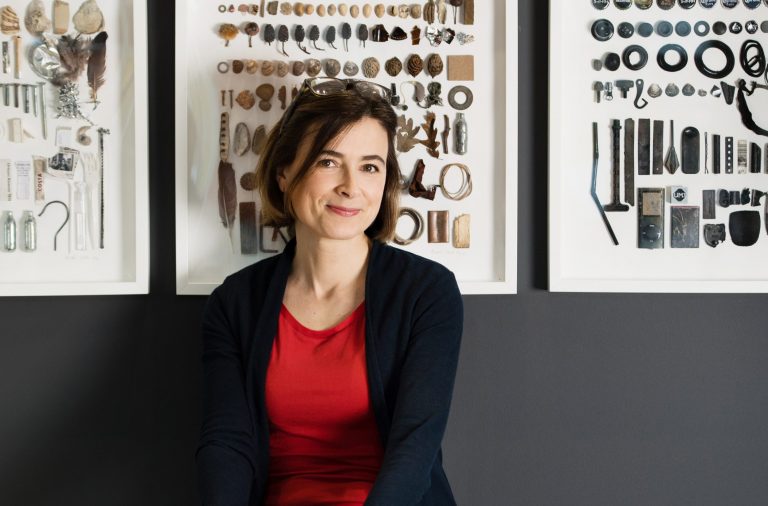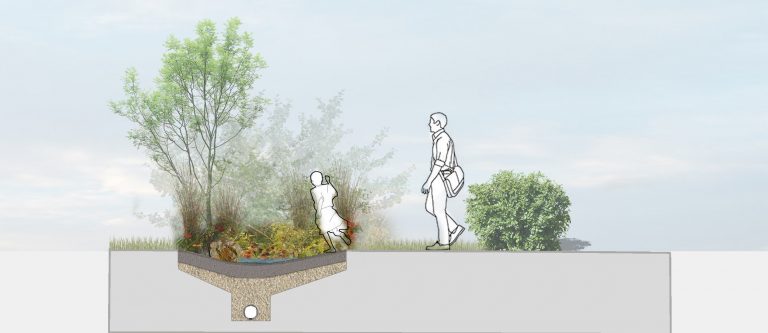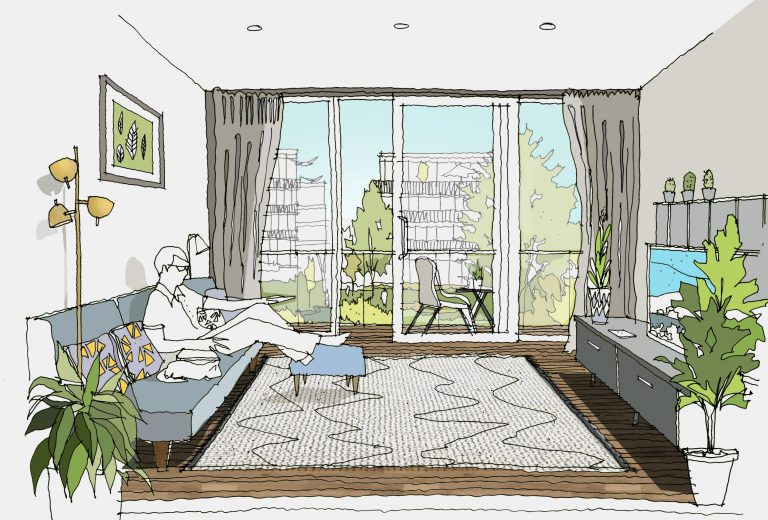Building Biodiversity
In Architecture Magazine, director Félicie Krikler peels back the layers of sustainability to explain why we as an industry must go deeper than simply ‘cutting emissions’ to ensure the future of our environment.
A week rarely passes without the effects of extreme and unexpected climatic conditions making waves in the media. Before Christmas, we saw a whole town erased from the map during wildfires in California and, since entering 2019, the UK has endured record breaking temperatures of 20 degrees Celsius in February, at the tail end of winter. While these events are reported as unprecedented, they are becoming alarmingly regular.

The construction industry, and specifically architecture, is no stranger to pushing sustainability. And rightly so. The built environment has a huge carbon footprint in the UK, which shows no sign of declining. As a sector, we must go beyond simply cutting concrete emissions and look at how incorporating new technologies and nature into the built environment can help mitigate emissions, improve air quality and aid cities in adapting to the changes already in motion. After all, fighting climate change requires more than just cutting carbon emissions. One of the biggest challenges for architecture is improving biodiversity through design and delivery.
The abundance of the UK’s biodiversity is inextricably linked to human health, agricultural yields and the thriving of non-human species. The statistics on biodiversity loss are deeply unnerving, with a recent report showing that insect numbers were falling by 2.5 per cent a year, meaning that they will cease to exist by the end of the Century unless we dramatically change tack.
Unfortunately, the concern for biodiversity often falls by the wayside when compared to rising carbon emissions and sea levels. And to make matters worse, the development process is extremely disruptive to the surrounding habitats and has been known to do more to hinder biodiversity than help it. Yet, by combining emerging design and delivery techniques, the built environment could help reverse these worrying trends.

At Assael, we have seen that pioneering Modern Methods of Construction (MMC) and the Design for Manufacture and Assembly (DfMA) approach, where appropriate, can dramatically reduce the environmental impact of construction. The shorter construction programme, minimal site traffic and reduced waste on site can have significant environmental benefits. The separate, high-quality components that are constructed away from the site in a quality controlled environment can be assembled quickly on site, greatly minimising the disruption to surrounding flora and fauna. This technique also lends itself to disassembly at the end of a building’s life, helping to create a closed-loop, circular economy within the built environment. Rather than demolishing a building, disassembly allow components to be re-used and repurposed on other projects, helping cut wastage and drive down emissions, a win-win situation when it comes to the sector’s environmental footprint.
Architecture must embrace these emerging build technologies while returning to processes found in the natural world, seeking to intertwine them into the fabric of every development. Such an approach can involve a wide range of design techniques, from using rough surface façade materials in which insects and animals can nest in, to creating spaces where flora and fauna are reinstated and allowed to flourish in peace.
For designers, it is about allocating space for wildlife and green infrastructure within wider developments and making the case to developers and local authorities that there is value added in building up biodiversity. This is even more important when considering the fact that many brownfield sites have a more abundant and biodiverse ecosystem than many greenfield sites.
Rather than demolishing a building, disassembly allow components to be re-used and repurposed on other projects, helping cut wastage and drive down emissions. Félicie Krikler
As such, it’s important that architects stand up for nature from the design inception, to protect the ecosystems found on brownfield sites.
To do this, protecting and promoting biodiversity must run through the way designers and developers approach each project, and this in turn must be closely tied to the chosen delivery model. Policy has to complement this, creating the right conditions to incentivise more biodiversity-conscious development. Recently, for example, the Environment Secretary Michael Gove launched a consultation on what he calls a ‘biodiversity net-gain”, which would require developers to show how their projects are going to add to local biodiversity. If they are unable to sufficiently show how their scheme would result in a biodiversity net-gain, it will not be allowed to go ahead.

Finally, and most importantly, architects must reflect on their own practices. In order to continue pushing sustainable causes throughout the built environment, practices must become bastions of sustainability themselves. This can range from the minute day-to-day management of a practice, to bigger picture incentives, such as offsetting business travel or reducing food wastage. What’s more, it is essential that architecture businesses pursue internationally recognised environmental certification, like ISO 14001, in order to provide an environmentally conscious framework for practices to follow and build upon. At Assael, we pride ourselves on being a sustainable practice as this, we believe, gives weight to our efforts to improve the environments we operate in.
Addressing climate change and reversing biodiversity loss is not the sole responsibility of architects, although they must play their part. Solving such a huge issue must involve joined-up thinking from the offset, between local authorities, devolved authorities, third sector organisations and scientific institutions, all working towards a unified goal of adding to the natural environment, not taking away.
Félicie Krikler, Director